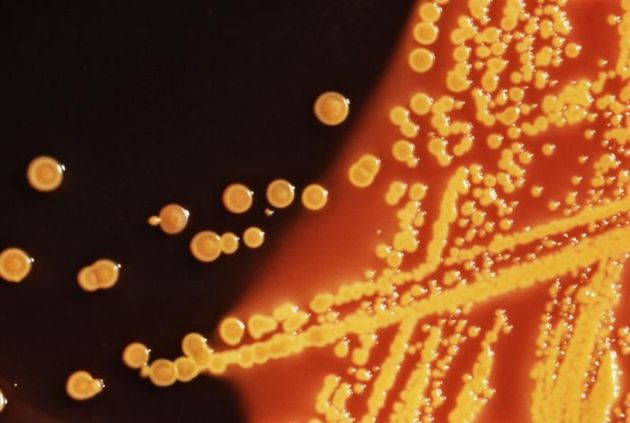Picture Perfect Method to Detect Deadly Bacteria

A new method of detecting a dangerous bacteria is as fast as a snapping a photograph.
The widely known Escherichia coli bacteria, or E. coli, belong in the guts of warm-blooded animals, where they aid digestion. But some types of E. coli produce toxins that can make people sick and can even be fatal.
That's why health inspectors at slaughterhouses and restaurants, for example, look for E. coli in meat and other foods. Health officials also test for high levels of the bacteria to see if fecal matter has contaminated bodies of water, such as rivers in cow country and lakes near sewage-processing plants.
Such tests, however, can mean days of waiting for food or water samples to culture in a laboratory Petri dish.
That waiting may soon be over, says Benjamin Miller, an associate professor of biochemistry and biophysics at the University of Rochester Medical Center in Rochester, New York. Scientists there have developed a system in which a treated silicon chip is combined with a digital camera to identify E. coli instantly.
"We're using changes in reflectivity to see proteins, or pieces of bacteria, left behind on our chip," Miller explained. Normally when this chip is struck by a single blast from a red laser, it doesn't reflect visible light. But if E. coli are stuck to the chip, the laser light becomes visible to the digital camera.
The trick is to get E. coli, and not other bacteria, to adhere to the chip's surface. "The way that we actually select what's going to be stuck to the chip is we attach a capture protein to the surface of the chip that specifically binds to, or grabs on to, the protein that we're trying to detect," Williams said.
Get the world’s most fascinating discoveries delivered straight to your inbox.
The silicon chip, which is used just once for each sample, is coated with an E. coli protein-—called a Translocated Intimin Receptor, or TIR—that harpoons E. coli bacteria and no others, Williams said. Captured E. coli mar the mirror-finished chip's surface, causing it to reflect.
The burst of light reflecting from the chip is captured on the prototype's digital camera. A burst on the camera's screen means E. coli lurk.
The technology, which Williams and his colleagues are developing into a commercial product at an independent company, could also be modified to detect other kinds of bacteria. Coating the chip with different proteins would allow it to capture other bacteria. And coating it with a mixture of proteins would in theory let the system detect many types of bacteria in a single sweep.
- War on Bacteria is Wrongheaded
- Scientists Make Bacteria Behave Like Computers
- E. Coli Used as Photo Film
